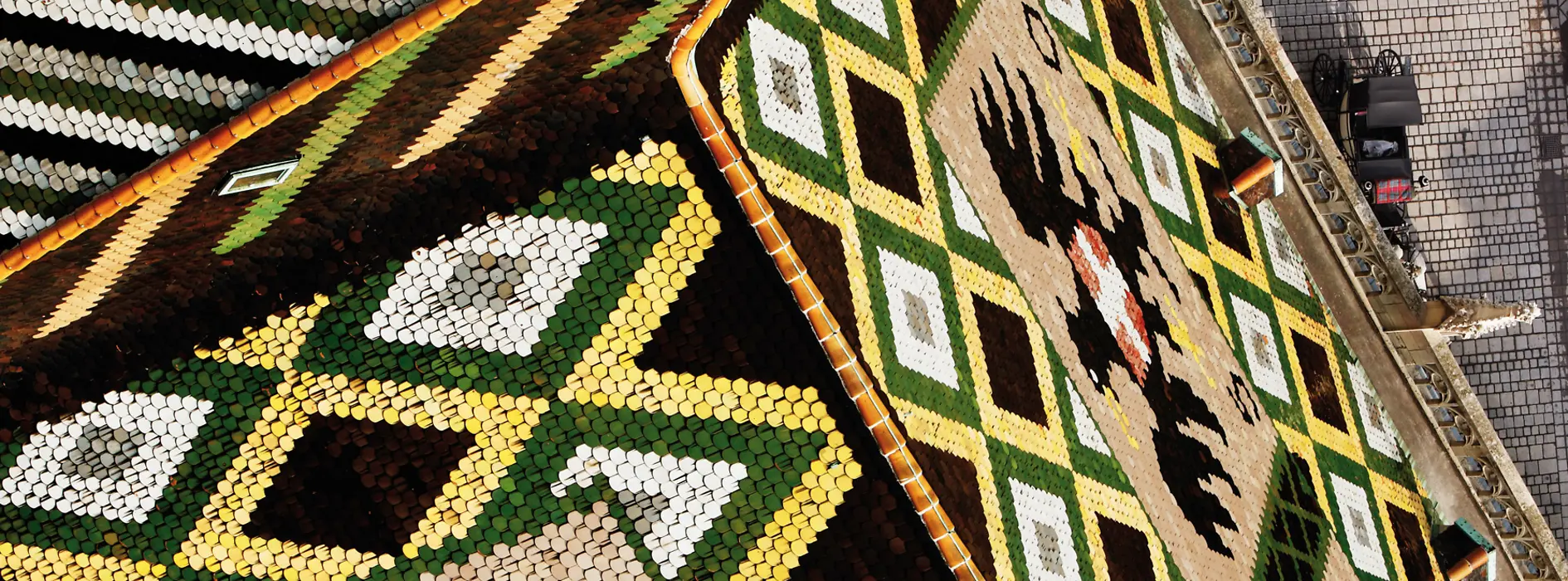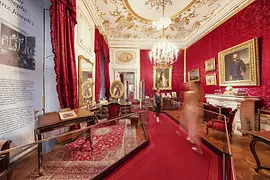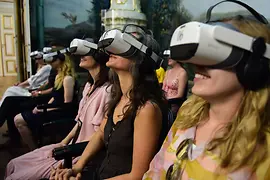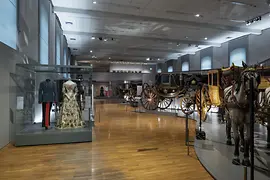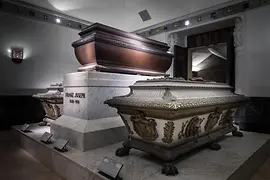Vienna Media News – December 2022 Sisi Takes Netflix and Cinemas by Storm
Sisi is still a success, long after her death! Netflix series The Empress, which launched in late September 2022, was the online provider’s most-watched international – i.e. non-English language – title in the first few weeks following its launch: in the first 18 days, it was streamed for nearly 135 million hours in around 23.6 million homes worldwide. Work on a second season is already under way. And a new book by Catherine Duve simply entitled Sisi (only available in German) primarily focuses on the monarch’s passion for horse riding. Marie Kreutzer’s unconventional film Corsage – a bold departure from the usual kitsch and cliché that seems to surround Sisi – is Austria’s entry for the Best Foreign Film Oscar. The official Oscar nomination shortlist will be announced on January 24, 2023. Corsage will hit cinema screens in the US on December 23, 2022, before premiering in the UK on December 30, 2022, and making its French debut on January 25, 2023. In October 2022, Corsage won the Best Film award at the BFI London Film Festival. And every year around Sisi's birthday on December 24, the legendary 1950s Sissi trilogy starring Romy Schneider delivers a surefire ratings success for broadcasters. But whether it’s a TV series, movie or historic novel, the boundaries between reality and fiction are seldom 100% clear. All too often, historical facts end up falling victim to poetic license.
So anyone looking to understand the real Empress Elisabeth will just have to come to Vienna. The city was the center of the Bavarian-born monarch’s life from her marriage to her cousin Emperor Franz Joseph of Austria in 1854 until her death in 1898. Countless Sisi-related sites from that time – from stately homes to her final resting place – continue to bear witness to the legendary Austrian ruler.
Hofburg
Located in the heart of Vienna’s historic first district, the Hofburg – one of the largest palace complexes in the world – was the ruling Habsburgs’ winter residence. Today it is the home of the Sisi Museum, where around 300 exhibits – including items of clothing, pieces of furniture, a 63-piece first-aid kit including her legendary cocaine syringe, and Sisi's death certificate – shine an authentic light on the monarch’s life and times. Also on display in the Sisi Museum is the world-famous portrait of Empress Elisabeth by Franz Xaver Winterhalter, which depicts her at the age of 28 with diamond jewelry in her hair – aka the famous Sisi stars created by Viennese jeweler Köchert – wearing a regal gala dress likewise decorated with diamond stars.
Right next door to the museum, the Imperial Apartments provide an insight into the private living arrangements of imperial couple Elisabeth and Franz Joseph. Highlights include Sisi's gymnasium, dressing room, bathroom and WC, where she famously devoted herself to her beauty routines, always paying particular attention to maintaining her long, thick hair, her wasp waist and her clear skin.
The Imperial Treasuries are housed in the oldest section of the Hofburg that dates back all the way to the 13th century. It, too, contains numerous mementos of Empress Elisabeth, including a number of priceless pieces of jewelry. Brand new: a combined ticket for the Imperial Treasuries and the Imperial Carriage Museum.
Part of the giant Hofburg complex, the Church of the Augustinian Friars is where Sisi and Franz Joseph tied the knot in 1854. And the Volksgarten contains a marble Sisi monument, which was unveiled in 1907 in the presence of Emperor Franz Joseph.
Schönbrunn
Schönbrunn Palace, the Habsburgs’ Vienna summer residence, is the most visited sight in Austria today. The palace comprises 1,441 rooms, 45 of which – including the private apartments of Emperor Franz Joseph and Empress Elisabeth – are open to visitors. One new addition to the palace is a virtual reality attraction: a painstakingly composed 24-minute VR experience brings the history of the palace to life, opening up a rare insight into the day-to-day workings of the monarchy thanks to digital headsets and fully immersive 360° content. To start with, a captivating blend of 3D animations and reenactments teaches visitors all about the construction of the palace and the history of the Habsburgs. Next, the film zeroes in on the lives of Emperor Franz Joseph I and Empress Elisabeth. Featured scenes include a segment with Sisi going through her beauty routines.
The extensive palace grounds – which are open free of charge all year round – contain the Wagenburg, or Imperial Carriage Museum, where a fleet of vehicles once used by members of the court is on display. Since 2008, a Sisi Trail has led visitors through the Wagenburg, tracing the life of the famous monarch – from her arrival as an imperial bride to her burial – in a compelling storyline, using her carriages as the narrative vehicle. Her magnificent dresses (including a stunning court dress made of black moiré silk) and unique cult objects such as her riding saddle provide points of interest along the way. One of the most spectacular exhibits is the black hearse used at Sisi's funeral. Brand new: a combined ticket for the Imperial Treasuries and the Imperial Carriage Museum. (Important: the Imperial Coach Collection is closed for renovations from Jan 9-Feb 28, 2023)
Other Sisi-Related Locations in Vienna
Numerous other locations in Vienna commemorate Empress Elisabeth.
- The exhibits at the Furniture Museum include her baby cradle, as well as some of the original furniture featured in the famous Sissi trilogy starring Romy Schneider. Available in a wide variety of languages, clips from the movies help put the individual pieces in context.
- Lainz Game Reserve on the outskirts of the city contains Sisi's castle of dreams: the fairytale Hermes Villa. Franz Joseph had it built for Elisabeth to encourage the empress – who loved to travel – to spend longer periods in Vienna. Spoiler: it still wasn’t enough to persuade her to stick around. The leading historicist artists of the day – among them Gustav Klimt and Franz Matsch – were commissioned to design the imperial private rooms. Upstairs, the Wien Museum has created a permanent exhibition dedicated to the history of the couple.
- The Josephinum – which reopened in fall 2022 after a multi-year renovation project – houses the medical history collection of the Medical University of Vienna. While the world-famous anatomical wax models ordered and purchased by Emperor Joseph II (1741-1790) in Florence are the stars of the show here, one very special exhibit will be of particular interest to Sisi fans: the metal file wielded by the anarchist Luigi Lucheni in the assassination of the Habsburg ruler in Geneva on September 10, 1898.
- Empress Elisabeth’s tomb is also located in Vienna at the Imperial Burial Vault, which is the final resting place of a total of 19 Habsburg emperors and 12 empresses. Known in German as the Kapuzinergruft or Kaisergruft, it contains Sisi's sarcophagus. Her mortal remains rest next to her husband Emperor Franz Joseph I (died 1916) and her son Crown Prince Rudolph, who took his own life in 1889.
- Hit musical Elisabeth celebrate its global premiere at the Theater an der Wien in 1992. So far, it has been performed in seven languages in a total of 12 countries including Japan, South Korea and China. On three evenings from June 29 to July 1, 2023, a special concert version will bring the musical back into the limelight against the magnificent backdrop of Schönbrunn Palace.
Sweet and exquisite: famously sweet-toothed, Sisi was particularly partial to candied violet blossoms. Her favorite confectionary is still produced according to the original recipe by Demel and Gerstner, both of whom are former imperial warrant holders.
Sisi's diamond stars – of which she owned 27 – were designed by Emanuel Köchert, another former purveyor to the imperial court. Available in the city to this day from A. E. Köchert on Neuer Markt, the stunning replicas are crafted according to the original designs.
Display alternative text
6 Places to visit for Sisi Fans in Vienna
Sisi's Diary Supports Refugees
The Austrian Academy of Sciences is running a very special promotion at the moment. Empress Elisabeth was always very concerned about the plight of refugees. One of her final wishes was that part of the proceeds from the sale of her poetic diary should go "to the welfare of the politically condemned and their needy relatives." The UN Refugee Agency (UNHCR) was selected as the recipient of these proceeds. To date, EUR 30,000 has been paid out to various refugee projects.
However, it was not until the 1980s that Sisi's diary was finally published. Elisabeth herself requested that a 60-year embargo on publication be observed following her death, due to its potentially damaging content. In it, she openly criticized the Viennese court and bemoaned the monarchy’s failure to move with the times. It also revealed just how worked up she was about some of the House of Habsburg’s internal affairs. Once the 60-year holding period had been observed, the work was to be handed over to the President of the Swiss Confederation.
However, he urged that the book should remain under lock and key for another 30 years. His reasoning: Sisi’s attempts to establish herself as a poet fell rather flat. The then Swiss President Eduard von Steiger wrote to Duke Ludwig of Bavaria, a relative of Sisi: "The question rather arises as to whether the publication of these writings might not be detrimental to the memory of the Empress."
With the embargo eventually lifted, the well-known historian and Sisi expert Brigitte Hamann was finally allowed to edit the texts and publish them in a volume of poetry. The proceeds have benefited refugees ever since. Available in German only, Empress Elisabeth – The Poetic Diary is published by Verlag der Österreichischen Akademie der Wissenschaften.
CORSAGE | English trailer | In cinemas now!
The Empress | Official Trailer | Netflix
Addresses:
- Hofburg, Heldenplatz, 1010 Vienna, https://www.hofburg.com/
- Sisi Museum, Michaelerkuppel, 1010 Vienna, https://www.sisimuseum-hofburg.at/
- Imperial Treasuries (Schatzkammer), Schweizerhof, 1010 Vienna, https://www.kaiserliche-schatzkammer.at/
- Church of the Augustinian Friars (Augustinerkirche), Augustinerstrasse 3, 1010 Vienna, https://augustinerkirche.augustiner.at/
- Schönbrunn Palace, Schönbrunner Schlossstrasse, 1130 Vienna, https://www.schoenbrunn.at/
- Schönbrunn Palace VR, Schönbrunner Schlossstrasse, 1130 Vienna, https://schoenbrunnvr.com/en/
- Imperial Coach Collection (Wagenburg), Schönbrunner Schlossstrasse, 1130 Vienna, https://www.kaiserliche-wagenburg.at/ (closed for renovations Jan 9-Feb 28, 2023 closed for renovation
- Imperial Furniture Collection (Möbelmuseum Wien), Andreasgasse 7, 1070 Vienna, https://www.moebelmuseumwien.at/
- Wien Museum Hermesvilla, Lainz Game Preserve (Lainzer Tiergarten), 1130 Vienna, https://www.hermes-villa.at/home/
- Josephinum – Collections of the Medical University of Vienna, Währinger Strasse 125, 1090 Vienna, https://www.josephinum.ac.at/
- Imperial Burial Vault (Kapuzinergruft, Kaisergruft), Tegetthoffstrasse 2, 1010 Vienna, https://www.kapuzinergruft.com/
- K. u. K. Hofzuckerbäckerei Demel, Kohlmarkt 14, 1010 Vienna, https://www.demel.com/
- A.E. Köchert, Neuer Markt 15, 1010 Vienna, https://www.koechert.com/
Contact
Helena Steinhart
Media Relations
+43 1 211 14-364
helena.steinhart@vienna.info
